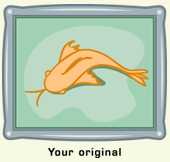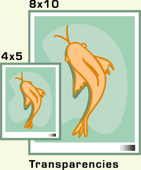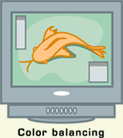

Remember, not all photography is created equal. To be able to use a large format transparency for reproduction, it must be faithful in terms of color, tonal range and textural integrity. The transparency must be able to maintain both highlight and shadow details. These two critical elements combined with color and textural information are what ultimately maintain the “feel” of the original. The transparency must look and feel in every way like the original. There should be no room for interpretation. This is a highly specialized form of photography and is absolutely critical to successful results.
Once we have a transparency, it is then drum scanned to retain the highest level of detail. After the scan is made, we electronically color balance the art, matching your original if available, or matching your transparency. Your proof is then printed on the same paper or canvas as chosen for the final print. Typically proofs are smaller than the final output (usually 8” x 10” or 11” x 14” depending on the final size of the reproduction) but large enough to give a good representation of what the reproduction will be like.
Of course, if you’re a digital artist creating your originals on a computer, the above steps would be eliminated and we would work directly form your electronic files.
Our aim is to provide a proof that is as true to the original as the Giclée process allows. Once we are satisfied with the quality of your reproduction we print two proofs, one that is shipped to you and one that we retain so that we can follow your instructions over the phone. Of course, if you prefer, you can make corrections on your proof and mail it back to us. Changes and corrections are made at this time, and there is a tremendous amount of latitude in what can be done. Any flaws or damage in the original art can also be corrected at this time if you wish. We allow up to three proofs for your fine-tuning options.
After the artist or publisher is satisfied and approves the proof, the final signed proof is mailed back to us and the output process begins. At this time, for security, we create two back-up CDs of the approved file that we store at two separate locations.
The final step in the process is to laminate canvases with a liquid UV protection, either gloss, semi-gloss or matte. Photographs may be laminated with a vinyl gloss or matte lamination, applied under heat and pressure. Watercolor papers and art papers require no lamination. Canvas stretching on standard or heavy-duty stretcher bars is available, as are gallery wraps.
Because of their quality, Giclées are appearing in the finest galleries and in the hands of collectors.
Contact us for our complete information packet, including our very competitive price list (as low as 10 cents per square inch depending on media) and samples of the various archival museum quality media we offer.
Select your best; we’ll handle the rest!








